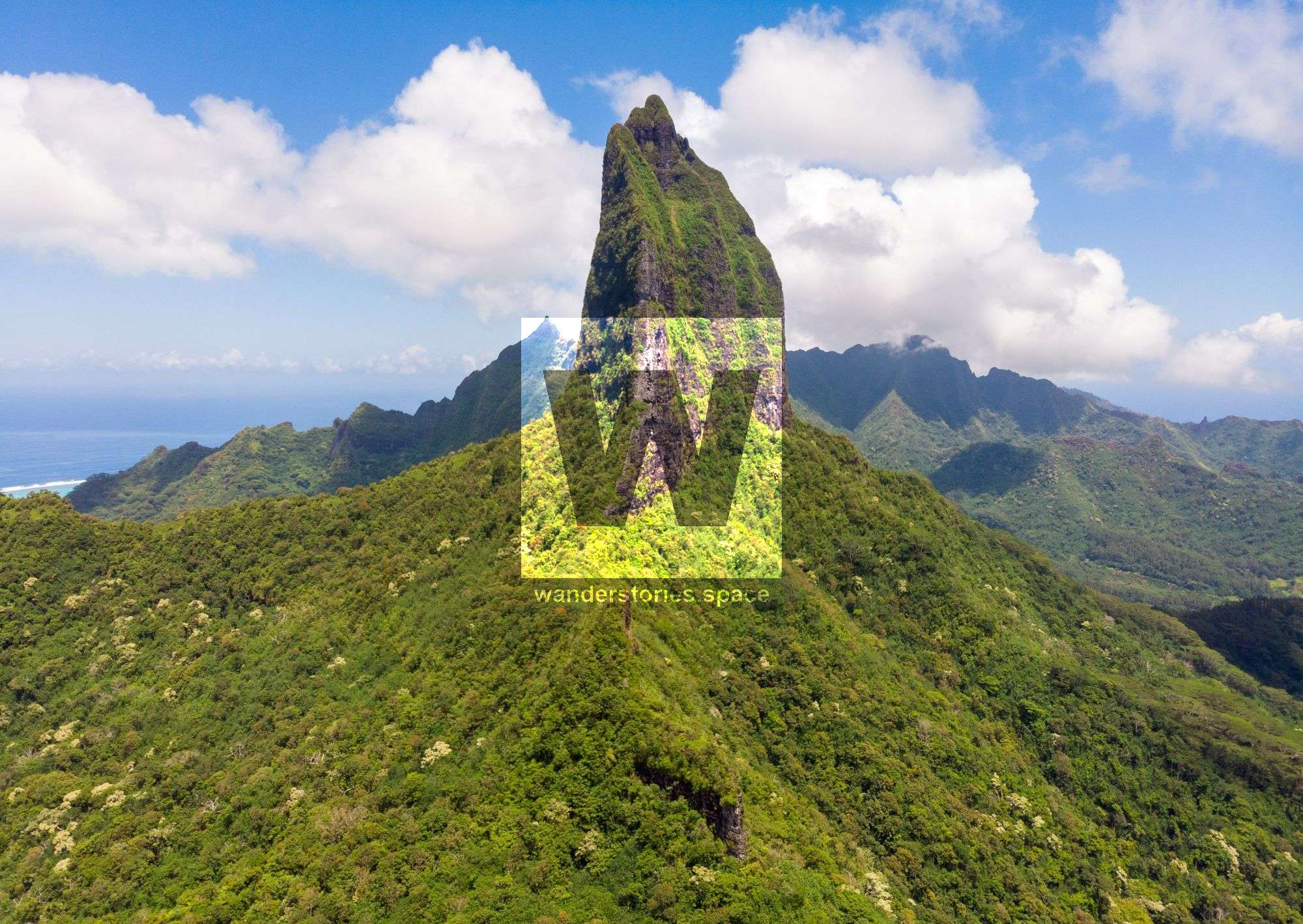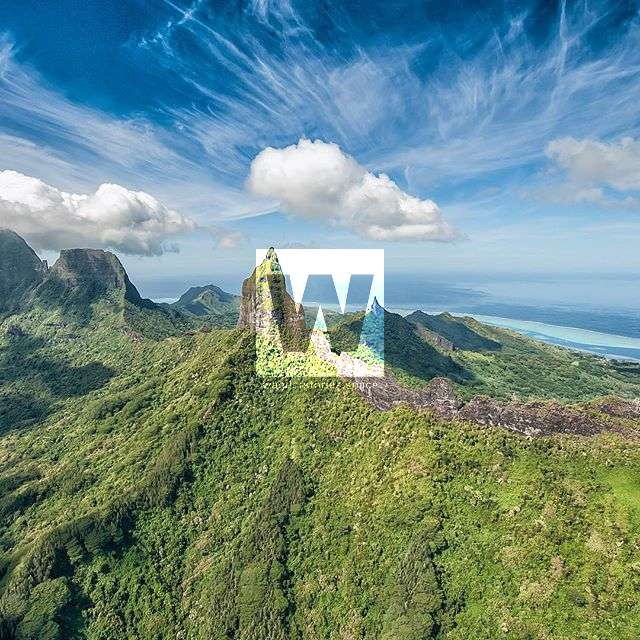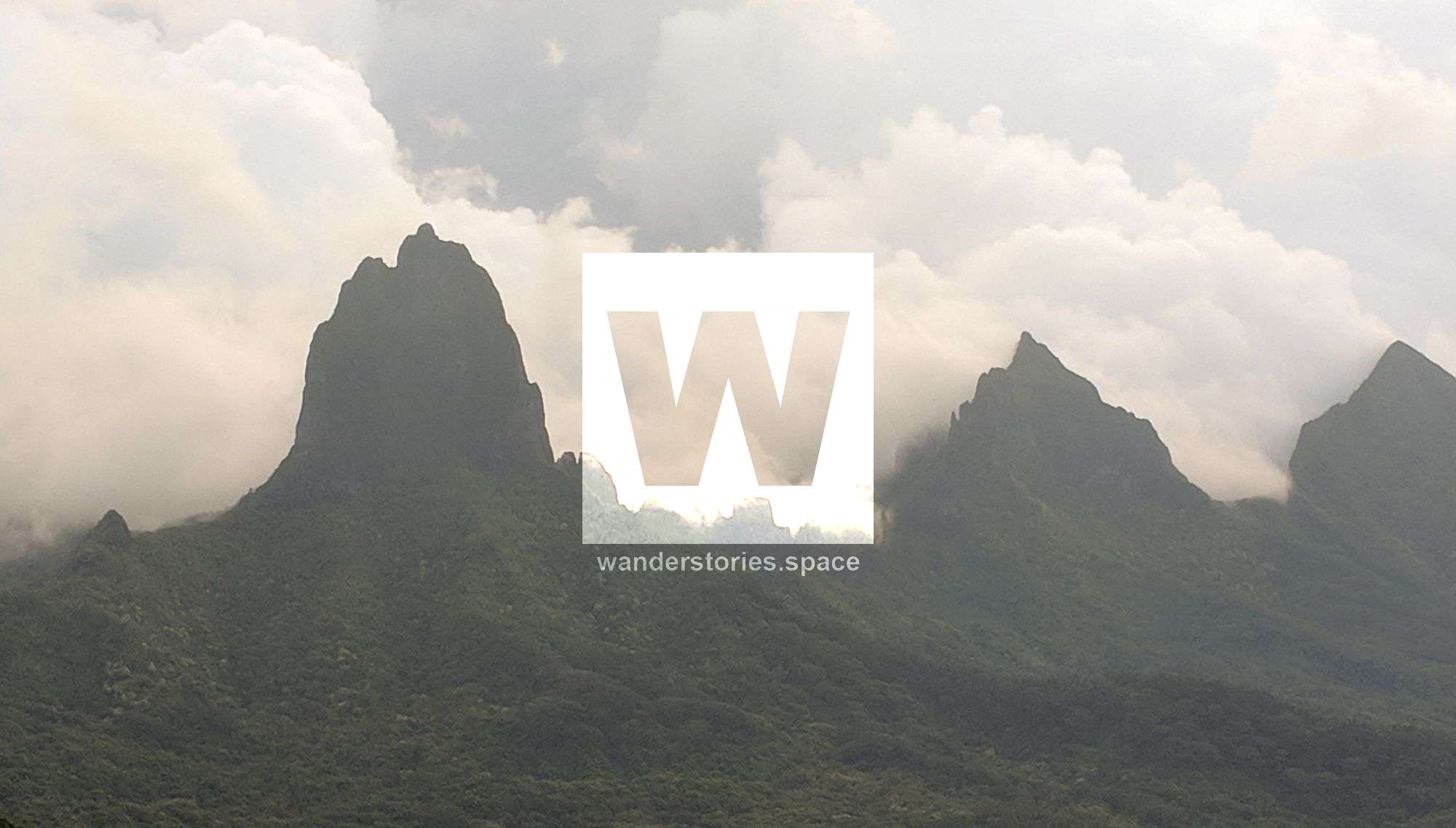Mount Mou'aroa (Shark's Tooth)

Location - Mo'orea, French Polynesia
Mo'orea has many iconic peaks and despite the relatively low altitude, the mountains are among the most vegetated and rugged in the world. Due to the loose soil, vegetated natures, and decomposing volcanic rocks, most of the peaks are considered impossible to climb and many are still awaiting first ascents. The island was formed as a volcano 1.5 to 2.5 million years ago, the result of a Society hotspot in the mantle under the oceanic plate that formed the whole of the Society Archipelago. It is theorized that the current bays were formerly river basins that filled during the Holocene sea rise. The Moorea volcano is now extinct.

Mou'aroa, also written as Mouaroa or Mou'a Roa and translates to 'the great mountain', rises 880 metres above sea level in the centre of the island of Mo'orea on the main crater line. This is probably the most iconic peak of the island due to it's impressive vertical cliffs and can be seen from most parts of the island. The rock is mostly made up of porous igneous volcanic rock and is chossy - i.e. decomposed, decaying, sandy soil-like, crumbly rock with loose blocks.

It is possible to hike to the base of the cliff via the southwest ridge which is best accessed via the Three Coconuts Pass. This saddle can be gain either via Belvedere Lookout from Opunohu Valley (north) or via Vaianae / Haapiti (south). From the Three Coconuts Pass, a hike along the ridgeline towards Mou'aroa. The further in on the trail you go, the less it is walked and therefore, the less it in maintained. The steepening ridgeline announces that the scramble is about to start. The grade 5 hike soon turns into a grade 6 climb up on loose soil and rocks, and small shrubs and vegetation. After 40m, becomes an impassable three metre rock face - this boulder problem is the crux of the access pitch. There are two bolts on the arete of the decent rock. After the boulder has been gain, another five metre walk is required to the anchors.

Mo'orea can never be forgotten do to the rugged terrain and it towering peaks. The jagged saw-edges that look like the spines of a forgotten dinosaur.
This article, and all other articles, are for entertainment purposes only and are not to be used as a guide. Please see our Disclaimer for more information.
